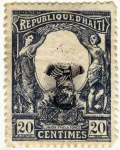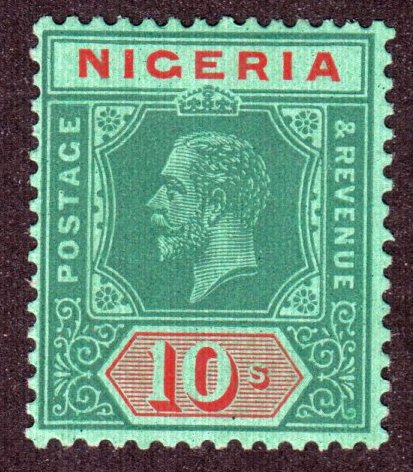
Discussion - Member to Member Sales - Research Center

Discussion - Member to Member Sales - Research Center


Yesterday morning, less than 24 hours later, I received a long email from the library, along with six PDF files about the stamp and an invoice for only $5.25. (I'd pay that much for parking if I had to drive to the Vancouver Public Library to find the same information, which I doubt I could find there anyway!)
I won't bore you with the details about the stamp, except to add the Scott catalogue notes that that the set of stamps that C-56 belongs in and one other set "…were privately produced. Their promoters presented a certain quantity of these labels to the Spanish Postal Authorities, who placed them on sale and allowed them to be used for three days, retaining the money obtained from the sale. ... Many so-called ‘errors’ of color and perforation are known. ... Reprints of Nos. C50-C57 have blurred impressions, yellowish paper. Value: one-tenth of originals.â€
Because of my communication with the APRL, I now have a lot more information, which I intend to put into a new web page. In the meantime, you might enjoy this new web page of mine, concerning C-56: "A Charles Lindbergh Puzzle What's that darned cat doing there?".
Bob

2 Members
like this post.
Login to Like.

05:50:19pm
Love it, Bob! His rationale regarding the "cat" is priceless.

Login to Like
this post
Hi Bob;
That was a really cool story about Lindbergh and his cat. My cat "Pacey" enjoyed it even more than I did!! 
In the information they sent you, was there anything about a missing portrait variety? I think I have one somewhere. Do you have to be an APS member to use their services?
Happy Collecting
Ken Tall Pines

Login to Like
this post
Yep. One must be an APS member to use APRL services. It's just one of the many reasons every stamp collector in the US should consider membership.

Login to Like
this post
I would never drop my APS membership. For only $40 a year, you get the APS journal, American Philatelist, access to circuit books (if you live in the U.S. — Canada Customs makes it uneconomic to bring them into Canada), and the APRL, which is certainly one of the best sources of philatelic information anywhere. The APRL has a lending service, although I have not used it since I am in Canada and shipping costs would be prohibitive. I was so pleased with the APRL's service in regards to my Spanish Lindbergh stamps that I added a small donation to my payment. I'm thinking of sending them a donation on a monthly basis.
Ken Tall Pines asked, "In the information they sent you, was there anything about a missing portrait variety?"
Indeed, there are missing portraits. And inverted portraits, double portraits (one inverted in opposite corner), double printings, imperf, misperf, gum varieties and colour varieties galore. So far I haven't seen any indication that the stamp was originally intended to be a bi-colour issue, but why else would the portrait be made from a separate printing plate?
Scott notes that "These stamps “were privately produced. Their promoters presented a certain quantity of these labels to the Spanish Postal Authorities, who placed them on sale and allowed them to be used for three days, retaining the money obtained from the sale. ... Many so-called ‘errors’ of color and perforation are known. ... Reprints of Nos. C50-C57 have blurred impressions, yellowish paper. Value: one-tenth of originals.â€
Here is an example of an imperf stamp with a double portrait, one inverted; it's an eBay purchase which I received just this last Tuesday:

The APRL librarian who handled my request, Fred Baumann, said this in an email:
"…the stamps are shady as all get-out, but they are neither forgeries nor counterfeits. Rather, they are stamps that never would have been stamps had it not been for in-kind bribery of the postal officials who tolerated their use for 72 hours. But, as the saying goes, if they were sold over a post office counter and valid for use on mail, however briefly, they are genuine stamps."
Bob

1 Member
likes this post.
Login to Like.

On Monday evening, I sent an email to the American Philatelic Research Library, requesting information about Spain C-56, a stamp which is almost staggering in the variety of its mostly intentional varieties. I asked them to limit charges to $10 or less.

Yesterday morning, less than 24 hours later, I received a long email from the library, along with six PDF files about the stamp and an invoice for only $5.25. (I'd pay that much for parking if I had to drive to the Vancouver Public Library to find the same information, which I doubt I could find there anyway!)
I won't bore you with the details about the stamp, except to add the Scott catalogue notes that that the set of stamps that C-56 belongs in and one other set "…were privately produced. Their promoters presented a certain quantity of these labels to the Spanish Postal Authorities, who placed them on sale and allowed them to be used for three days, retaining the money obtained from the sale. ... Many so-called ‘errors’ of color and perforation are known. ... Reprints of Nos. C50-C57 have blurred impressions, yellowish paper. Value: one-tenth of originals.â€
Because of my communication with the APRL, I now have a lot more information, which I intend to put into a new web page. In the meantime, you might enjoy this new web page of mine, concerning C-56: "A Charles Lindbergh Puzzle What's that darned cat doing there?".
Bob

2 Members
like this post.
Login to Like.
They who would give up essential Liberty, to purchase a little temporary Safety, deserve neither Liberty nor Safety. -Benjamin Franklin
09 Jul 2014
05:50:19pm
re: APS comes through…again!
Love it, Bob! His rationale regarding the "cat" is priceless.

Login to Like
this post

re: APS comes through…again!
Hi Bob;
That was a really cool story about Lindbergh and his cat. My cat "Pacey" enjoyed it even more than I did!! 
In the information they sent you, was there anything about a missing portrait variety? I think I have one somewhere. Do you have to be an APS member to use their services?
Happy Collecting
Ken Tall Pines

Login to Like
this post

re: APS comes through…again!
Yep. One must be an APS member to use APRL services. It's just one of the many reasons every stamp collector in the US should consider membership.

Login to Like
this post

re: APS comes through…again!
I would never drop my APS membership. For only $40 a year, you get the APS journal, American Philatelist, access to circuit books (if you live in the U.S. — Canada Customs makes it uneconomic to bring them into Canada), and the APRL, which is certainly one of the best sources of philatelic information anywhere. The APRL has a lending service, although I have not used it since I am in Canada and shipping costs would be prohibitive. I was so pleased with the APRL's service in regards to my Spanish Lindbergh stamps that I added a small donation to my payment. I'm thinking of sending them a donation on a monthly basis.
Ken Tall Pines asked, "In the information they sent you, was there anything about a missing portrait variety?"
Indeed, there are missing portraits. And inverted portraits, double portraits (one inverted in opposite corner), double printings, imperf, misperf, gum varieties and colour varieties galore. So far I haven't seen any indication that the stamp was originally intended to be a bi-colour issue, but why else would the portrait be made from a separate printing plate?
Scott notes that "These stamps “were privately produced. Their promoters presented a certain quantity of these labels to the Spanish Postal Authorities, who placed them on sale and allowed them to be used for three days, retaining the money obtained from the sale. ... Many so-called ‘errors’ of color and perforation are known. ... Reprints of Nos. C50-C57 have blurred impressions, yellowish paper. Value: one-tenth of originals.â€
Here is an example of an imperf stamp with a double portrait, one inverted; it's an eBay purchase which I received just this last Tuesday:

The APRL librarian who handled my request, Fred Baumann, said this in an email:
"…the stamps are shady as all get-out, but they are neither forgeries nor counterfeits. Rather, they are stamps that never would have been stamps had it not been for in-kind bribery of the postal officials who tolerated their use for 72 hours. But, as the saying goes, if they were sold over a post office counter and valid for use on mail, however briefly, they are genuine stamps."
Bob

1 Member
likes this post.
Login to Like.

